Fifteen of us set off on this famed trek. Only 10 made it to the end
By Gary Nunn
You’ve done all your training by walking everywhere for the past six months. You’ve strictly swapped every elevator and escalator for a stair climb. You’ve studiously gone through your kit list 19 times. You’re as fit as you can be and ready for your four-day trek across notoriously undulating terrain.
Yet, there are still a heap of things that could go wrong once you arrive in Peru on your once-in-a-lifetime trek to see one of the world’s seven wonders. I know – because I trekked in an organised group with Intrepid last month where that’s exactly what happened.
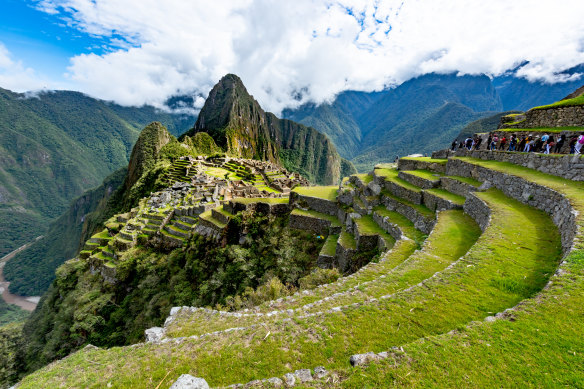
It’s one of the world’s seven wonders, but a lot can go wrong when trekking Machu Picchu.Credit: Getty Images
Fifteen of us set off on the famed Inca Trail trek to Machu Picchu; only 10 of us made it to the end.
Five trekkers turned back on day two – citing strenuousness, coldness or sickness.
Our Intrepid tour guide said he has done more than 1000 tours since 1998 and, in that whole time, only seven people have ever turned back, making this group of five a record. One of the turn-back trekkers – who caught the train up to the mountain kingdom three days later with all the suspiciously sniffly symptoms of COVID – told me it was such an event for a group that size to turn back, even the porters requested a picture with them all. The porters are such heroes for carrying your camping gear (often, incredibly, running along the mountain face in sandals), you’d grant them any favour – especially if you’re weak from sickness.
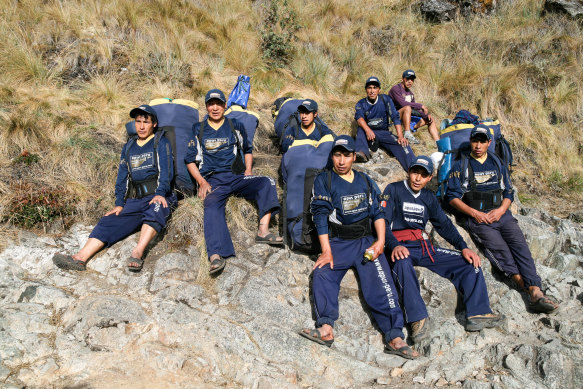
The local porters that carry your camping gear are heroes.Credit: Getty Images
Nonetheless, the same guide told me there are multiple ‘turn backs’ every day on the Inca Trail. There are bound to be: at the beginning of 2024, to recuperate tourist revenue losses of previous years, Peru increased the daily visitor cap to Machu Picchu – introduced in 2011 to combat over-tourism – from 4060 to 4500 a day. At least 200 of these are hikers.
The chilly early morning of day two is crunch time for those wishing to turn back. The second day of trekking is notoriously tougher than day one; it is, to borrow a Daft Punk riff: harder, steeper, colder, longer. You ascend steep steps by the hundreds, maybe even thousands (it felt like it) to the ominously named Dead Woman’s Pass, 4215 metres (13,328 feet) above sea level. Instead of a perished female trekker, the silhouette of the rock resembles the curvature of a prostrate lady. The former, however, felt feasible once you reached the summit: the highest point of the trail with what felt like the entire natural world genuflecting below in honour of your physical feat.
I felt for those who faced no other option than to turn back; day two’s scenery is almost impossible to describe without resorting to hyperbolic cliche but, yes, it did literally take my breath away, which is what happens when altitude combines with awe.
It also wasn’t completely their fault – you really can’t help it if you get sick. There are, however, some things you can help and, given he’d done more than 1000 treks, I asked our guide to enlighten me on the top mistakes. With some of my own personal errors thrown in.
Turning up in Peru and deciding to book the trek spontaneously
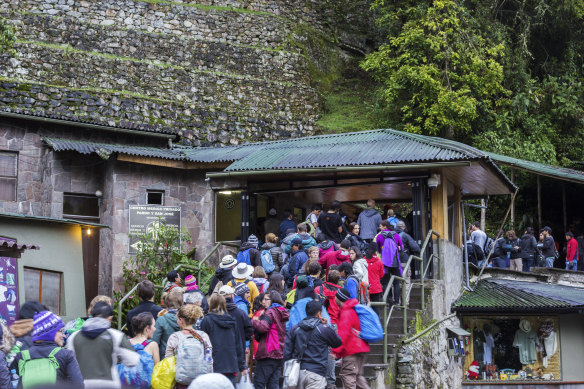
Book well in advance … Machu Picchu has exploded in popularity.Credit: Getty Images
No, you absolutely cannot do this. Those visitor caps mean you have to book well in advance – at least six months to a year; demand is always high. I booked with a friend I met at university 20 years ago; we live on opposite sides of the world, so we don’t see each other as much as we did in our hedonistic 20s. Now we’ve evolved from ravers to hikers, the plan was to disconnect from tech so we could properly reconnect on the mountain. We booked a year in advance. Also, buyer beware: you must show your passport twice – at the beginning of the trek, and at the entrance to Machu Picchu. This must be the same passport number you booked with. I’d clumsily washed my Australian passport two months prior and got a new one. They weren’t going to let me in as it, of course, had a different passport number to my waterlogged one. It was only because I had a photo of my previous passport that they let me in, or I’d have been denied entry.
Ignoring signs of altitude sickness
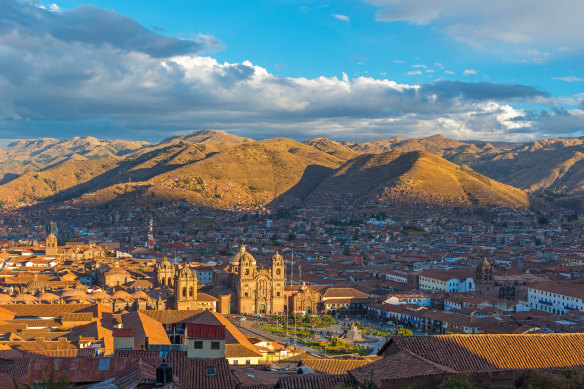
We acclimatised over two glorious days in picturesque Cusco.Credit: Getty Images
Headache, appetite loss, exhaustion, difficulty sleeping, dizziness and feeling or being sick are all your warning signs. Ignore them at your peril – even if others dismiss them.
One man with such symptoms on day one of our tour was told by our erudite but obstinate tour guide: altitude sickness is “all in your head”. Eventually, he turned back – and had to go in a hyperbaric chamber over two days in Cusco before being flown to a hospital in Lima. Medics say if he continued, he’d have likely had a heart attack or stroke. Turns out it wasn’t all in his head – it was in his lungs.
Listen to your body and your instinct, even if there are others pushing you in a different direction.
Also: give yourself time to acclimatise to the altitude before starting the trek. We spent two glorious days in picturesque Cusco – 3399 metres above sea level – and climbing a set of simple steps left me completely breathless on day one. By day two, climbing the same steps was already easier.
Not hiring hiking sticks
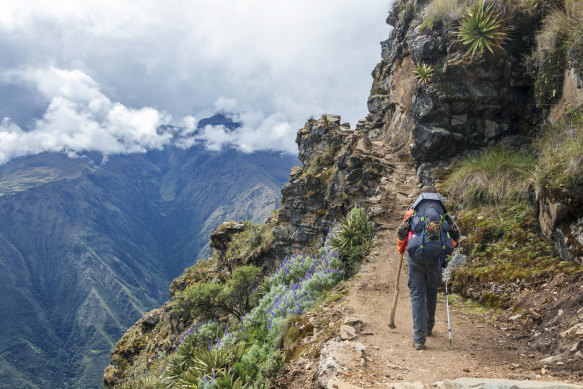
I’d have truly been lost – or even injured – without a walking stick.Credit: Getty Images
I’m going to reveal my prejudice here, but I thought walking sticks were for elderly or unfit walkers with poor balance. I arrogantly envisaged myself striding along with ease and didn’t decide to hire them until the very last minute, on my friend’s strong recommendation (she makes many of these). I’d have truly been lost – or even injured – without them. This is, quite literally, no walk in the park – it’s tough. On a scale of one to five, five being toughest, Intrepid rates it as a grade-four trek. The sticks steady you on the steep bits. They’re essential.
Your clothes aren’t warm enough
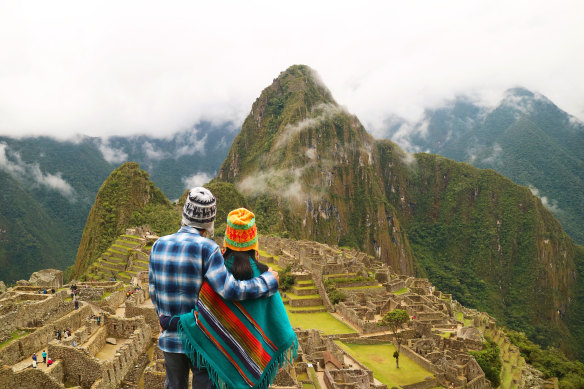
Layer up … conditions along the Inca Trail can get pretty chilly.Credit: Getty Images
This was my biggest fear pre-trek – the physical exertion didn’t really intimidate me, but the cold definitely did. I suffer from Raynaud’s phenomenon – in my case, freezing feet which are difficult to warm up due to poor circulation. This trip is all about layers – starting with skins/tights and working your way up to fleeces and thermals (and for me, slippers at night!). One of the turn-backs said it was just too cold at night, but he had only three layers. I was wearing five: vest, T-shirt, jumper, fleece, gilet. It got down to minus 2 degrees.
During the day, it’ll go from stinking hot to cold and back again in a matter of minutes – I was in a vest and shorts by lunchtime, but you’re at the mercy of nature.
Packing your bag is an art-form. There’s a fine balance between overpacking and giving yourself backache, and underpacking and giving yourself hypothermia. Don’t do what I did and take a smallish backpack without a supporting front clip-strap (my back killed by the end); you need a proper, large hiker’s backpack – yes, even with those hero porters helping lighten your load. It’s a stressful packing experience for sure, but you’ll reap the rewards.
Our Intrepid guide said a top mistake is that inexperienced trekkers bring a “beach sleeping bag” rather than an insulated four-seasons one (I hired mine). “People freeze in ordinary sleeping bags,” he said.
Rushing
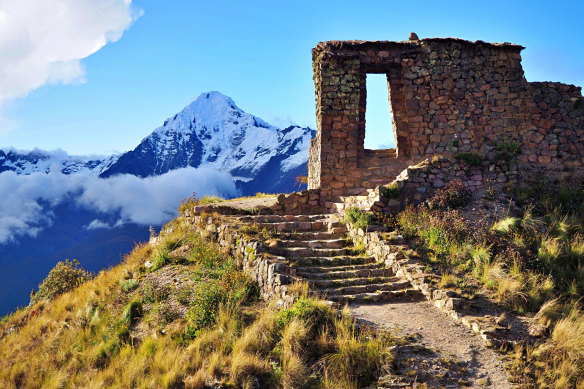
Slow down … sometimes the most beautiful view is behind you.Credit: Getty Images
You’re in one of the genuinely most spectacular places on Earth before you even spot Machu Picchu – the scenery is more beautifully dramatic than any I’ve ever seen. Relish it. I often found myself stopping to release an involuntary beauty sigh. There was a big surprise around every corner and Machu Picchu at the very end was “the logical conclusion” to such splendour, as my friend astutely observed. My head cleared in a way it hasn’t in months. “Don’t rush; enjoy the nature,” our guide said – among his better advice. Remember: sometimes the most beautiful view is behind you. Look back. But do so with care: you’re one loose bit of rubble away from a sprained ankle and a porter-carry of shame.
There are also practical reasons to slow your pace: it helps you acclimatise to the altitude, encourages endurance and prevents exhaustion or dehydration; when you stop, you often remember to drink and snack – both essential. Not everything in life is a race; this is a time to exhale, save some energy in the tank. Also – enjoy the rare digital detox. I didn’t turn my phone back on for 36 hours once it was all over. Bliss.
Doubt
“Doubt is the thief of accomplishment,” one of the rare female porter-turned-guides told me as we walked. We agreed, you’re often capable of much more than you think. Don’t tell yourself you haven’t trained enough. It’s too late by the time you’re there.
The perilous path ahead often looked shockingly insurmountable. It was rarely as difficult as it looked from the bottom of the hill – one foot steadily in front of the other is the only way forward. It may take time. It may be hard. But the remaining 10 of us all got there – at our own pace. As with many hard things, it was so very worth it.
The writer travelled at his own expense.
Sign up for the Traveller Deals newsletter
Get exclusive travel deals delivered straight to your inbox. Sign up now.